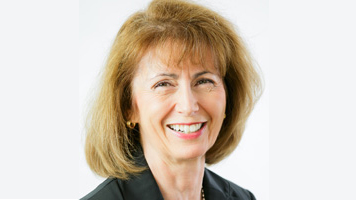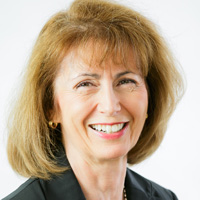Tech, Diverse Workforce To Shape Businesses


Mary Collins
Futurists in the 1950s predicted that in this century we would be working only a few hours a day, flying around using jetpacks, and colonizing the moon. Some of the technological advances predicted then, including driverless cars and watches as communications devices, have come to pass.
However, it is the combination of technological advances — with an increasingly diverse workforce — that is shaping the business organization of the future.
Peter J. McAliney, Ph.D., executive director of Montclair State University’s Continuing and Professional Education unit, took a deep dive into what these two dynamics mean for businesses now and in the future. His article entitled “A World of Change” appears in the May/June issue of MFM’s member magazine, The Financial Manager (TFM).
Technology Shifts
McAliney observes that human, physical and software components are becoming deeply intertwined. This, in turn, will influence how individuals think about their professional development and the way organizations will try to maximize the productivity of their human capital. He says: “Moving forward, our lives will be increasingly shaped by artificial intelligence, robotics, cloud computing, neurotechnologies, biotechnologies, the internet of things, Big Data, virtual and augmented reality, energy technologies and other technological capabilities yet to be discovered.”
Blockchain, also known as a distributed ledger technology, appears to be one of the infrastructure candidates to support what McAliney says is being called the Fourth Industrial Revolution. As reported in the January/February issue of TFM, blockchain is what McAliney explains as, “an interrelated network that allows digital assets to be transacted between participants in a real-time, immutable (i.e. irreversible) manner.” He goes on to say “blockchain’s potential to radically impact key relationships implicit in existing economic frameworks across many industries” had led some to predict the next-generation economy will be blockchain-enabled.
Dynamic Diversity
Just as dynamic as the influence of new technologies, so too are the shifts in workplace demographics. Many groups including the Society for Human Resource Management have reported that, for the first time in history five generations are working side by side, each with different leadership, communication and career development styles. Add to that the multicultural nature of the workforce and our organizations are mirrors of our customer base. McAliney says this enables organizations to better compete globally.
This multicultural, multigenerational workplace is a complex environment that requires leaders, and their staffs to refine their interpersonal skills. Rather than dwelling on differences, McAliney says the focus should be on building collaborative relationships, engaging in multifaceted mentoring relationships, and being supportive of the different life paths that employees might choose.
Reimagining The Workforce
This convergence of technology and diversity will result in the development of new machine-human integrated processes. This, McAliney says, requires a shift from a focus on operational roles to insight-driven roles that “impact single-skilled workers as well as multi-skilled workers, generalists and specialists, technology-oriented professionals and those who have well-developed creative capabilities.”
Further, he believes the new work environment requires us to rethink how professionals learn and what they need to learn. “Obtaining a traditional degree, in as short a period of time as possible, may not be a relevant model moving forward.” He sees a need to balance formal and informal learning.
Learning Literacy
In 1987, one of the pioneers of the cable industry, Glenn Jones, established “Mind Extension University,” an online university, the goal of which was to support lifelong learning. McAliney offers that “learning literacy” is an emerging framework for one to think about educational and professional development. Just as Jones advocated then, this model calls for individuals to be in a continual learning mindset. With such an approach, they can amass a portfolio of competencies developed through both formal and informal means. McAliney calls this a “stackable learning plan.”
These competencies, he states, can be developed over the course of a career, “allowing an individual to become more proficient in their first career choice, or easily transition into a completely new career,” what we now call “reinvention.” This can be a win-win for employers and their employees; individuals have a way to stay current with skills that move their career forward, while companies benefit from having workers with the right abilities in place to achieve corporate goals.
Despite the seeming complexities, McAliney believes employees can easily address the requirements of the new workplace by taking proactive steps to design their own learning plans. An individual plan, he says, may include digital on-demand learning, job shadowing/apprenticeships, simulated/augmented reality, formal continuing education programs and certifications, collaborative peer-to-peer learning, informal affinity group participation and teaching others.
It is important to note that MFM and its BCCA subsidiary are what McAliney calls “affinity groups.” Our vision is to make media finance employees more knowledgeable and valuable today while developing the next generation of global media leaders.
The associations do this by offering webinars, seminars, and conferences as well as through articles such as this one. Most of the content we offer is prepared by others from the industry, offering opportunities the author champions, including “collaborative peer-to-peer learning” and “teaching others.”
The Leaderless Organization
“Traditional, hierarchical organizations are not going away any time soon,” McAliney says. At the same time, he believes that “there will be new structures that leverage the technological advances and increased diversity of the workforce.” He anticipates a shakeup in the workforce with older workers vying for entry-level jobs and younger people with broader skills competing for more senior management positions. To accommodate this, he suggests expanding “the skillset data points” used to hire new workers.
McAliney expects new organizational models will emerge. “Among them is the decentralized autonomous organization, which is often built on blockchain technology.” Such an organization works without a leader or centralized management. It is operated through smart contracts — self-executing contractual states stored on the blockchain that are programmed and agreed to in advance by all parties to a transaction — that will execute when the programmed conditions are met.”
McAliney acknowledges that the broad changes affecting companies, and the actions they may require, will take some time to digest. I encourage you to read his article in its entirety to learn more about what the five generations in the workplace want, stackable learning and steps to career success. It is available on the MFM website through the end of June; after that, we will move it to the members-only area.
Leaders who can teach others, such as those who gave of their time to conduct sessions at our recent Media Finance Focus 2019, are inspiring role models. Further, those who are curious to explore this ever-changing business environment will be most in demand. These leaders are the one who also have the courage to admit that they do not know everything, and once they have learned something, they teach others as a way to reinforce their own learning.
Didn’t get to attend Media Finance Focus 2019 in New Orleans? Look for summaries of the sessions and more on the MFM website, in the upcoming July/August issue of TFM, and in future articles for this newsletter.
As for jetpacks, let’s not rule them out yet, they still may be in our future.
Mary M. Collins is president and CEO of the Media Financial Management Association and its BCCA subsidiary, the media industry’s credit association. She can be reached at [email protected] and via the association’s LinkedIn, Twitter or Facebook sites.
































Comments (0)